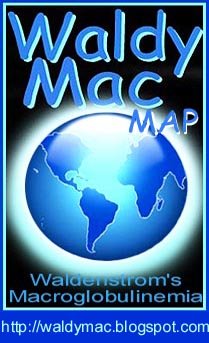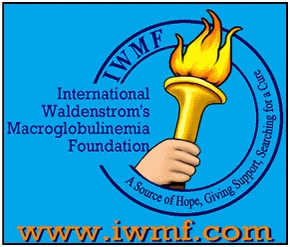The Things You Learn...
(The Good, Bad, Down Right Frightening, or Encouraging)
I spent a large portion of today doing a bit of research on the two chemo drugs they'll be introducing Tony to. Since we'll be meeting with our Dr. Craig next week, I need to read up on anything and everything I could possibly have a question about, otherwise the alternative is... wait till a questionable reaction/event occurs and "attempt" to reach the doctor. We've found it's a bit better to prepare then sit back and be ignorant. I must admit at times it would seem much easier to believe and abide by the old saying, "Ignorance is Bliss".
The two new chemo drugs Tony will be ingesting
or have infused: Melphalan and Cytoxan
Melphalan and Cytoxan: Did you know these drugs are a synthesized compounds (similar in structure with very different properties) of dichloroethylsulfide (an active ingredient in MUSTARD GAS!) HA!!
Cancer Chemotherapy (excerpted from ChemHeritage.org)
A Chemical Needle in a Haystack Meanwhile, the deadly mustard gases used first in World War I became the topic of much research interest. Mustard gas greatly reduced the number of white blood cells in those unfortunate enough to be exposed to it. The active ingredient in the mustard gas was dichloroethylsulfide, and it was identified as the cause of the leukopenia....Dichloroethylsulfide caused leukopenia by slowing the rate at which white blood cells reproduced. Researchers eventually realized that if dichloroethylsulfide could affect the rate of white blood cell division it might also slow the rate of cancer cell division, a rate that was faster than normal....During the 1960s these new compounds—mechlorethamine, cycloposhphamide, chlorambucil, and melphalan—were part of the cancer chemotherapy arsenal, and they are still used today.Other chemotherapy drugs are the descendants—some are quite distant descendants—of an amazing diversity of compounds and sources. One chemotherapy agent is the descendant of the insecticide DDT, another is one of a substance found in coal tar. Still others are the descendants of a bacterium in the soil, of an evergreen shrub tea, of the Chinese tree Camptotheca acuminata, and of the the Pacific yew tree....and Did You Know ??(For those of you like my dear beloved... and sometimes bullheaded... Tony who think anything to do with herbs or herbal remedies is witchcraft! PoppyCock! Where do you think most known drugs used today come from?)
The NW Pacific Yew Tree:
In 1967 scientists isolated a compound from the bark of the Pacific yew tree and now patients with lung, ovarian, and breast cancer are treated with a synthetic version of this compound?

VINCA: a perennial, evergreen herb in the dogbane family, originally native to the island of Madagascar, and known widely in South Florida as a pesky weed.
It's amazing how many ailments this common little weed helps!
Western researchers finally noticed the VINCA plant in the 1950's when they learned of a tea Jamaicans were drinking to treat Diabetes. They discovered the plant contains a motherlode of useful "Alkaloids" (70 in all at last count). Some, lower blood sugar levels (thus easing the symptoms of diabetes). Others lower blood pressure, others act as hemostatics (arrest bleeding) and two others, vincristine and vinblastine, have anti-cancer properties, and are used in the treatment of leukaemia and Hodgkin's disease. Periwinkles also contain the alkaloids reserpine and serpentine, which are powerful tranquilizers.
Little did I know a compound of this flower I'd grown up surrounded by in South Florida, would be at the root of some of Tony's worst side effects from chemo.... Peripheral Neuropathy. Vincristine.... Nasty Stuff! Hmmm, maybe I should grow some, and chew on the leaves regularly to keep my blood pressure down?! grin
North American Ginseng (which grows in WV)
I stumbled upon a recent article published in ScienceDaily . The MAYO clinic in Rochester, MN reports preliminary data:
Herb Shows Potential To Reduce Cancer-related Fatigue
Science Daily — North Central Cancer Treatment Group (NCCTG) researchers, based at Mayo Clinic in Rochester, Minn., have generated preliminary data suggesting that a form of American ginseng provides greater improvements in fatigue and vitality in patients who receive the highest doses tested, compared to lower doses or no treatment.Cancer-related fatigue is one of the most profound and distressing issues patients face. The patients receiving the larger doses showed improvements in overall energy levels, reporting higher vitality levels and less interference with activity from fatigue. They also reported an improvement in overall mental, physical, spiritual and emotional well-being.
Ah, well.... just a few interesting bits and pieces of useless information I thought I'd share with you all. You just never know when some day you'll have a family member striken by the Big "C", and will want to extract your new pearls of wisdom.



